
Wassily Kandinsky Giclée Fine Art Prints 5 of 7
1866-1944
Russian Expressionist Painter
Wassily Kandinsky (1866-1944) was a Russian painter and art theorist who is credited with being one of the pioneers of abstract art. His work laid the foundation for the development of abstract expressionism and other non-representational art movements in the 20th century.
Wassily Kandinsky was born on December 4, 1866, in Moscow, Russia. He grew up in a cultured and intellectual family, with his father being a successful tea merchant and his mother a pianist. Kandinsky's love for art and music began at an early age, and he learned to play the piano and cello.
Kandinsky initially pursued a career in law and economics, studying at the Moscow Faculty of Law. He graduated in 1892 and began working as a law professor at the Moscow State University. However, his passion for art persisted, and at the age of 30, he decided to abandon his legal career and move to Munich, Germany, to study painting.
In Munich, Kandinsky studied at the prestigious Academy of Fine Arts under the guidance of Anton Ažbe and Franz von Stuck. He was influenced by various art movements, including Impressionism, Post-Impressionism, and Jugendstil (German Art Nouveau). Kandinsky's early works were primarily landscapes and scenes from Russian folklore, characterized by bright colors and expressive brushstrokes.
In 1901, Kandinsky co-founded the artists' group Phalanx, which aimed to challenge the conservative art establishment in Munich. He also opened his own art school, where he met and taught the young Gabriele Münter, who would become his student, lover, and later, a significant artist in her own right.
Kandinsky's artistic style evolved over time, moving from representational art to abstraction. In 1909, he joined the Neue Künstlervereinigung München (New Artists' Association of Munich), which sought to promote innovative and experimental art. However, disagreements within the group led Kandinsky and other artists, including Franz Marc, to form Der Blaue Reiter (The Blue Rider) in 1911. This group became a significant force in the development of German Expressionism and abstract art.
Kandinsky's move towards abstraction was influenced by his belief in the spiritual and emotional power of color and form. He considered art to be a means of expressing inner feelings and emotions, rather than merely depicting the external world. In 1910, Kandinsky created his first abstract watercolor, which marked a turning point in his career.
During World War I, Kandinsky returned to Russia, where he became involved in the cultural and educational reforms following the Russian Revolution. In 1921, he was invited to join the Bauhaus, a progressive art and design school in Weimar, Germany. At the Bauhaus, Kandinsky taught mural painting and developed his theories on color and form, which he published in his influential book "Point and Line to Plane" (1926).
In 1933, the Nazi regime forced the closure of the Bauhaus, and Kandinsky moved to Paris, where he spent the last decade of his life. Despite the challenges of living in exile, Kandinsky continued to create innovative abstract paintings, exploring geometric forms and the interaction of colors.
Wassily Kandinsky passed away on December 13, 1944, in Neuilly-sur-Seine, France. His pioneering work in abstract art has had a lasting impact on the development of modern art, influencing generations of artists and art movements, including Abstract Expressionism, Color Field painting, and Lyrical Abstraction. Kandinsky's theories on the spiritual and emotional power of art continue to inspire artists and art lovers alike.
Wassily Kandinsky was born on December 4, 1866, in Moscow, Russia. He grew up in a cultured and intellectual family, with his father being a successful tea merchant and his mother a pianist. Kandinsky's love for art and music began at an early age, and he learned to play the piano and cello.
Kandinsky initially pursued a career in law and economics, studying at the Moscow Faculty of Law. He graduated in 1892 and began working as a law professor at the Moscow State University. However, his passion for art persisted, and at the age of 30, he decided to abandon his legal career and move to Munich, Germany, to study painting.
In Munich, Kandinsky studied at the prestigious Academy of Fine Arts under the guidance of Anton Ažbe and Franz von Stuck. He was influenced by various art movements, including Impressionism, Post-Impressionism, and Jugendstil (German Art Nouveau). Kandinsky's early works were primarily landscapes and scenes from Russian folklore, characterized by bright colors and expressive brushstrokes.
In 1901, Kandinsky co-founded the artists' group Phalanx, which aimed to challenge the conservative art establishment in Munich. He also opened his own art school, where he met and taught the young Gabriele Münter, who would become his student, lover, and later, a significant artist in her own right.
Kandinsky's artistic style evolved over time, moving from representational art to abstraction. In 1909, he joined the Neue Künstlervereinigung München (New Artists' Association of Munich), which sought to promote innovative and experimental art. However, disagreements within the group led Kandinsky and other artists, including Franz Marc, to form Der Blaue Reiter (The Blue Rider) in 1911. This group became a significant force in the development of German Expressionism and abstract art.
Kandinsky's move towards abstraction was influenced by his belief in the spiritual and emotional power of color and form. He considered art to be a means of expressing inner feelings and emotions, rather than merely depicting the external world. In 1910, Kandinsky created his first abstract watercolor, which marked a turning point in his career.
During World War I, Kandinsky returned to Russia, where he became involved in the cultural and educational reforms following the Russian Revolution. In 1921, he was invited to join the Bauhaus, a progressive art and design school in Weimar, Germany. At the Bauhaus, Kandinsky taught mural painting and developed his theories on color and form, which he published in his influential book "Point and Line to Plane" (1926).
In 1933, the Nazi regime forced the closure of the Bauhaus, and Kandinsky moved to Paris, where he spent the last decade of his life. Despite the challenges of living in exile, Kandinsky continued to create innovative abstract paintings, exploring geometric forms and the interaction of colors.
Wassily Kandinsky passed away on December 13, 1944, in Neuilly-sur-Seine, France. His pioneering work in abstract art has had a lasting impact on the development of modern art, influencing generations of artists and art movements, including Abstract Expressionism, Color Field painting, and Lyrical Abstraction. Kandinsky's theories on the spiritual and emotional power of art continue to inspire artists and art lovers alike.
155 Kandinsky Artworks
Page 5 of 7

Giclée Canvas Print
$63.83
$63.83
SKU: 17106-KAW
Wassily Kandinsky
Original Size:49 x 64 cm
Art Institute of Chicago, Illinois, USA
Wassily Kandinsky
Original Size:49 x 64 cm
Art Institute of Chicago, Illinois, USA

Giclée Canvas Print
$58.56
$58.56
SKU: 18386-KAW
Wassily Kandinsky
Original Size:70 x 50 cm
Solomon R. Guggenheim Museum, New York, USA
Wassily Kandinsky
Original Size:70 x 50 cm
Solomon R. Guggenheim Museum, New York, USA

Giclée Canvas Print
$71.82
$71.82
SKU: 16117-KAW
Wassily Kandinsky
Original Size:59.8 x 69.5 cm
Musee des Beaux Arts, Nantes, France
Wassily Kandinsky
Original Size:59.8 x 69.5 cm
Musee des Beaux Arts, Nantes, France

Giclée Canvas Print
$82.50
$82.50
SKU: 18411-KAW
Wassily Kandinsky
Original Size:80.3 x 80.6 cm
Solomon R. Guggenheim Museum, New York, USA
Wassily Kandinsky
Original Size:80.3 x 80.6 cm
Solomon R. Guggenheim Museum, New York, USA

Giclée Canvas Print
$68.35
$68.35
SKU: 19343-KAW
Wassily Kandinsky
Original Size:58.7 x 48.7 cm
Kunstmuseum, Basel, Switzerland
Wassily Kandinsky
Original Size:58.7 x 48.7 cm
Kunstmuseum, Basel, Switzerland
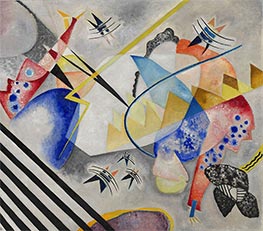
Giclée Canvas Print
$72.71
$72.71
SKU: 18379-KAW
Wassily Kandinsky
Original Size:118.7 x 136.5 cm
Solomon R. Guggenheim Museum, New York, USA
Wassily Kandinsky
Original Size:118.7 x 136.5 cm
Solomon R. Guggenheim Museum, New York, USA

Giclée Canvas Print
$75.28
$75.28
SKU: 19341-KAW
Wassily Kandinsky
Original Size:110.3 x 120.3 cm
Kunstmuseum, Basel, Switzerland
Wassily Kandinsky
Original Size:110.3 x 120.3 cm
Kunstmuseum, Basel, Switzerland

Giclée Canvas Print
$82.80
$82.80
SKU: 16143-KAW
Wassily Kandinsky
Original Size:130 x 130 cm
Centre Georges Pompidou, Paris, France
Wassily Kandinsky
Original Size:130 x 130 cm
Centre Georges Pompidou, Paris, France

Giclée Canvas Print
$54.63
$54.63
SKU: 16146-KAW
Wassily Kandinsky
Original Size:33 x 45 cm
State Russian Museum, St. Petersburg, Russia
Wassily Kandinsky
Original Size:33 x 45 cm
State Russian Museum, St. Petersburg, Russia
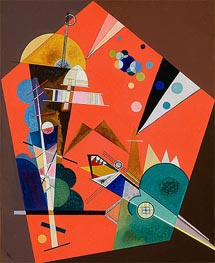
Giclée Canvas Print
$67.44
$67.44
SKU: 16173-KAW
Wassily Kandinsky
Original Size:unknown
Public Collection
Wassily Kandinsky
Original Size:unknown
Public Collection

Giclée Canvas Print
$54.63
$54.63
SKU: 16138-KAW
Wassily Kandinsky
Original Size:unknown
Public Collection
Wassily Kandinsky
Original Size:unknown
Public Collection
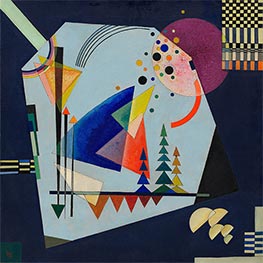
Giclée Canvas Print
$82.50
$82.50
SKU: 18383-KAW
Wassily Kandinsky
Original Size:60.3 x 59.7 cm
Solomon R. Guggenheim Museum, New York, USA
Wassily Kandinsky
Original Size:60.3 x 59.7 cm
Solomon R. Guggenheim Museum, New York, USA

Giclée Canvas Print
$66.55
$66.55
SKU: 18398-KAW
Wassily Kandinsky
Original Size:66 x 82 cm
Solomon R. Guggenheim Museum, New York, USA
Wassily Kandinsky
Original Size:66 x 82 cm
Solomon R. Guggenheim Museum, New York, USA

Giclée Canvas Print
$63.38
$63.38
SKU: 18407-KAW
Wassily Kandinsky
Original Size:116.4 x 89 cm
Solomon R. Guggenheim Museum, New York, USA
Wassily Kandinsky
Original Size:116.4 x 89 cm
Solomon R. Guggenheim Museum, New York, USA

Giclée Canvas Print
$54.63
$54.63
SKU: 18381-KAW
Wassily Kandinsky
Original Size:43 x 32.7 cm
Solomon R. Guggenheim Museum, New York, USA
Wassily Kandinsky
Original Size:43 x 32.7 cm
Solomon R. Guggenheim Museum, New York, USA

Giclée Canvas Print
$82.50
$82.50
SKU: 18391-KAW
Wassily Kandinsky
Original Size:71.6 x 71.2 cm
Solomon R. Guggenheim Museum, New York, USA
Wassily Kandinsky
Original Size:71.6 x 71.2 cm
Solomon R. Guggenheim Museum, New York, USA

Giclée Canvas Print
$63.68
$63.68
SKU: 16147-KAW
Wassily Kandinsky
Original Size:64.5 x 50.2 cm
Thyssen-Bornemisza Museum, Madrid, Spain
Wassily Kandinsky
Original Size:64.5 x 50.2 cm
Thyssen-Bornemisza Museum, Madrid, Spain

Giclée Canvas Print
$54.63
$54.63
SKU: 18396-KAW
Wassily Kandinsky
Original Size:33 x 44.5 cm
Solomon R. Guggenheim Museum, New York, USA
Wassily Kandinsky
Original Size:33 x 44.5 cm
Solomon R. Guggenheim Museum, New York, USA

Giclée Canvas Print
$66.99
$66.99
SKU: 16100-KAW
Wassily Kandinsky
Original Size:81 x 100 cm
Solomon R. Guggenheim Museum, New York, USA
Wassily Kandinsky
Original Size:81 x 100 cm
Solomon R. Guggenheim Museum, New York, USA

Giclée Canvas Print
$54.63
$54.63
SKU: 16122-KAW
Wassily Kandinsky
Original Size:38.6 x 67.8 cm
Musee des Beaux Arts, Nantes, France
Wassily Kandinsky
Original Size:38.6 x 67.8 cm
Musee des Beaux Arts, Nantes, France

Giclée Canvas Print
$69.70
$69.70
SKU: 16132-KAW
Wassily Kandinsky
Original Size:70 x 60 cm
Private Collection
Wassily Kandinsky
Original Size:70 x 60 cm
Private Collection
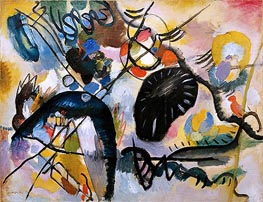
Giclée Canvas Print
$63.54
$63.54
SKU: 16135-KAW
Wassily Kandinsky
Original Size:100 x 130 cm
State Russian Museum, St. Petersburg, Russia
Wassily Kandinsky
Original Size:100 x 130 cm
State Russian Museum, St. Petersburg, Russia
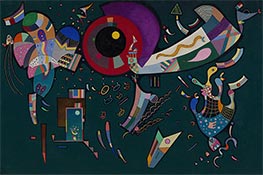
Giclée Canvas Print
$54.95
$54.95
SKU: 18406-KAW
Wassily Kandinsky
Original Size:97.2 x 146.4 cm
Solomon R. Guggenheim Museum, New York, USA
Wassily Kandinsky
Original Size:97.2 x 146.4 cm
Solomon R. Guggenheim Museum, New York, USA

Giclée Canvas Print
$70.91
$70.91
SKU: 16144-KAW
Wassily Kandinsky
Original Size:139 x 111 cm
Georgian Museum of Art, Tbilisi, Georgia
Wassily Kandinsky
Original Size:139 x 111 cm
Georgian Museum of Art, Tbilisi, Georgia